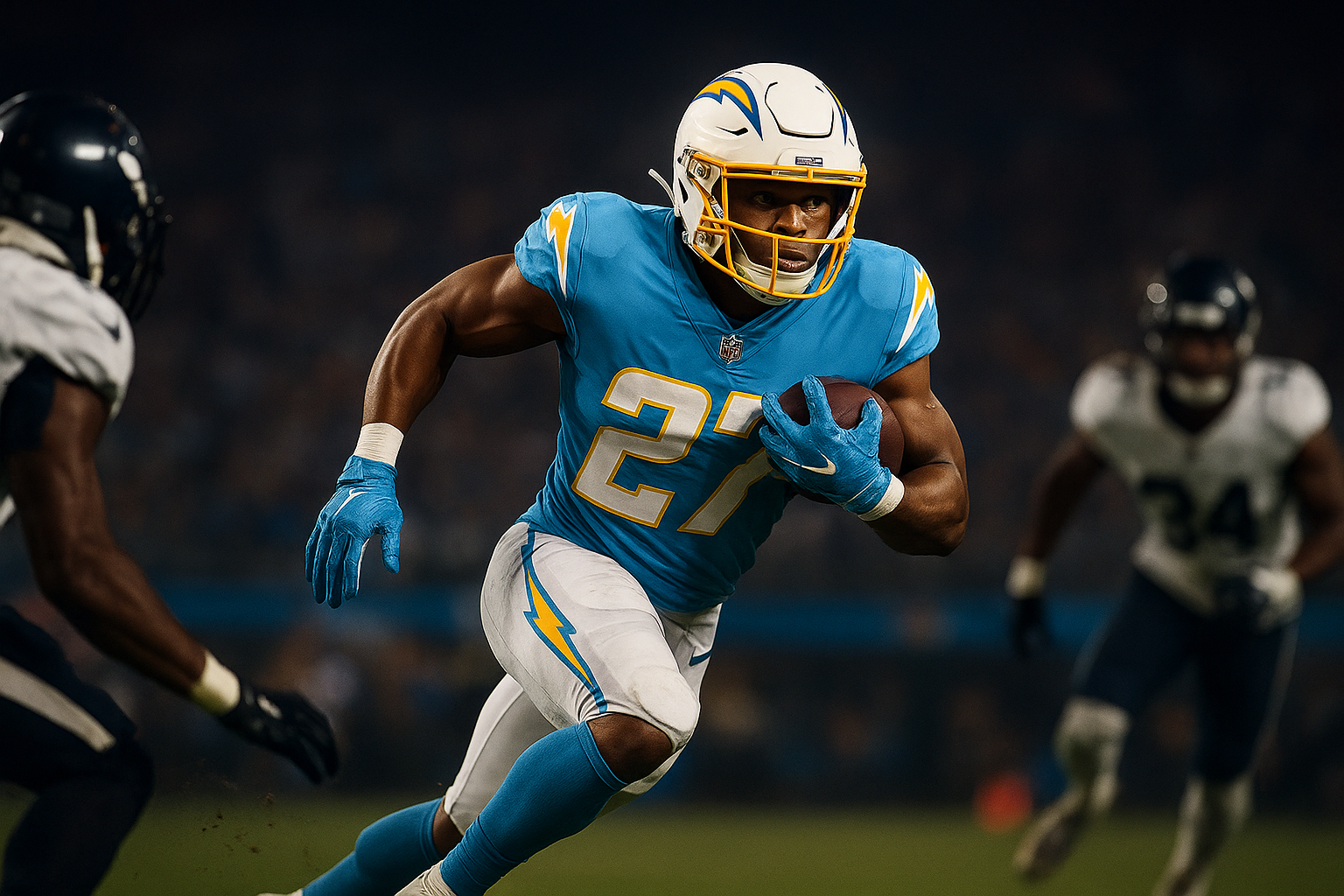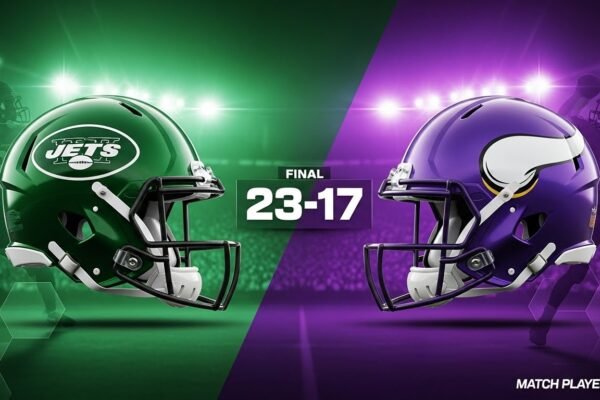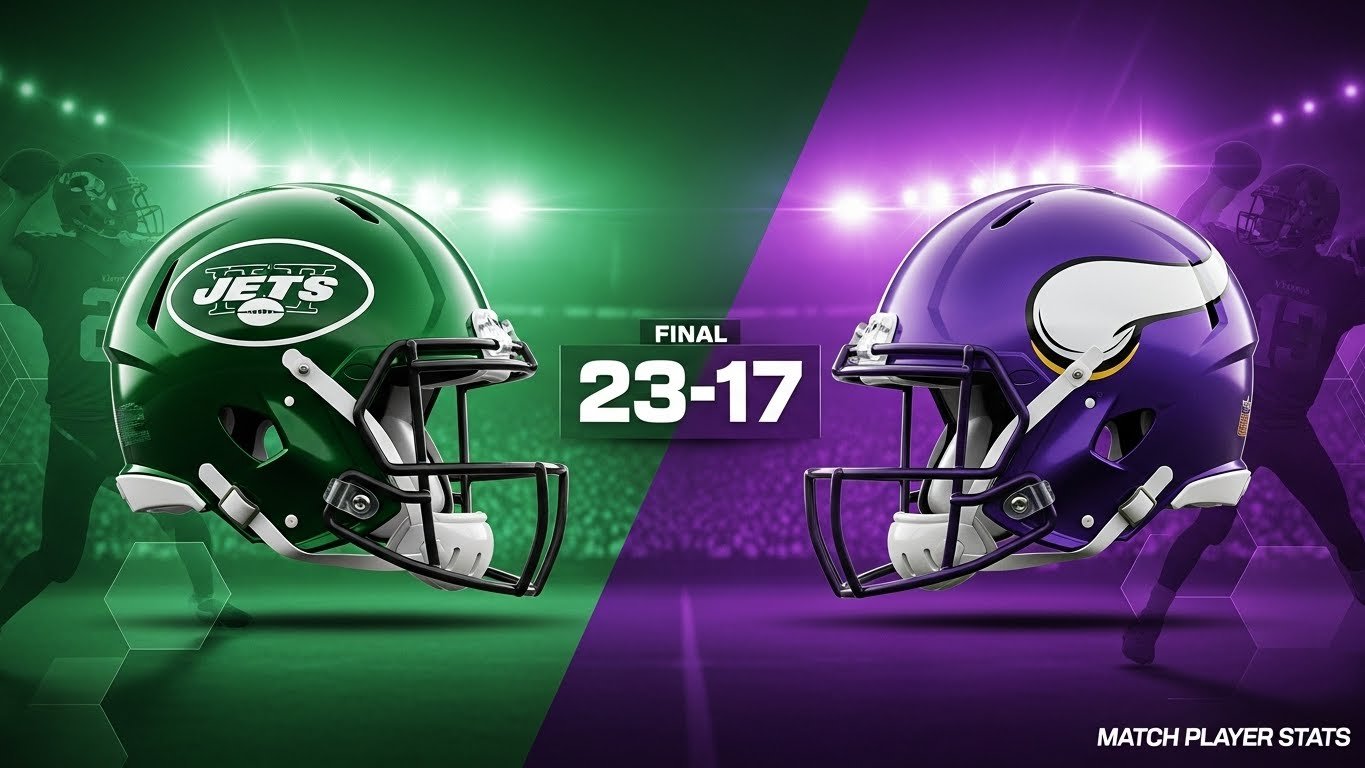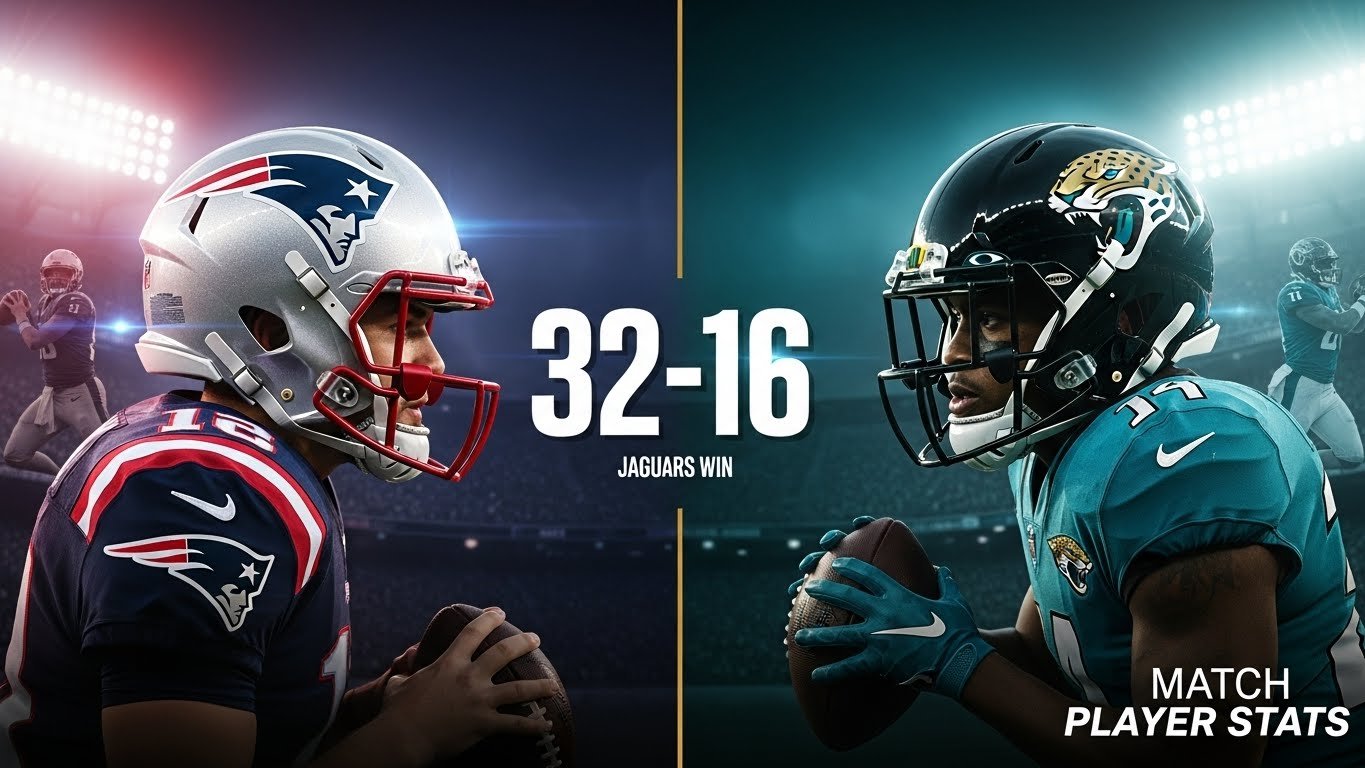

Los Angeles Chargers vs Carolina Panthers Match Player Stats (Sept 15, 2024)
The Los Angeles Chargers walked into Bank of America Stadium on September 15, 2024, and dominated Carolina in every phase of the game. Jim Harbaugh’s team controlled the clock, moved the ball at will, and suffocated the Panthers offense in a 26-3 victory that wasn’t as close as the score suggests.
Quick Reference Stats
| Key Stat | Chargers | Panthers |
|---|---|---|
| Final Score | 26 | 3 |
| Total Yards | 349 | 159 |
| Rush Yards | 219 | 90 |
| First Downs | 21 | 7 |
| Possession | 36:18 | 23:42 |
The Chargers outgained Carolina by 190 total yards while controlling the ball for over 12 more minutes.
Table of Contents
Justin Herbert’s Precision in Harbaugh’s System
Herbert completed 14 of 20 passes for 130 yards and two touchdowns, posting a perfect 100.0 passer rating while operating within Jim Harbaugh’s ball-control offense.
Herbert’s Complete Performance
| Statistic | Result |
|---|---|
| Completions/Attempts | 14/20 |
| Completion Percentage | 70.0% |
| Passing Yards | 130 |
| Yards Per Attempt | 6.5 |
| Touchdowns | 2 |
| Interceptions | 1 |
| Passer Rating | 100.0 |
| QBR | 82.9 |
| Times Sacked | 1 |
Both of Herbert’s touchdown passes found Quentin Johnston, who finished with 5 catches for 51 yards. The limited passing volume reflects Harbaugh’s commitment to establishing the run first, then exploiting the opportunities it creates.
Herbert didn’t need to throw 40 times to be effective. The ground game created favorable down and distance situations, allowing him to pick his spots and attack single coverage when it presented itself.
Ground Game Dominance Sets the Tone
Los Angeles rushed for 219 yards on 44 carries, wearing down Carolina’s defense with a physical attack that controlled every aspect of the game.
Chargers Rushing Production
| Player | Carries | Yards | Average | TDs | Long |
|---|---|---|---|---|---|
| J.K. Dobbins | 17 | 131 | 7.7 | 1 | 43 |
| Gus Edwards | 18 | 59 | 3.3 | 0 | 6 |
| Justin Herbert | 6 | 18 | 3.0 | 0 | 13 |
| Hassan Haskins | 3 | 11 | 3.7 | 0 | 5 |
Dobbins Makes History
J.K. Dobbins became the first NFL player since Jamal Lewis in 2003 to record three runs of 43+ yards in a season’s first two games. His 43-yard touchdown burst in the second quarter broke the game open, showcasing the combination of vision, power, and breakaway speed that makes him special.
Dobbins averaged 7.7 yards per carry, finding running lanes and making defenders miss in the open field. His success opened up everything else for the Chargers offense.
Edwards Provides the Physical Element
Gus Edwards carried the ball 18 times for 59 yards, handling the punishment between the tackles while keeping the clock moving. Edwards’ role was grinding out tough yardage on first and second downs, setting up manageable third down situations for Herbert.
The one-two punch of Dobbins’ explosiveness and Edwards’ physicality gave Carolina’s defense problems all afternoon, forcing them to keep extra defenders in the box and opening up the passing game.
Complete Team Statistical Breakdown
| Category | Los Angeles Chargers | Carolina Panthers |
|---|---|---|
| Total Yards | 349 | 159 |
| Passing Yards | 130 | 69 |
| Rushing Yards | 219 | 90 |
| First Downs | 21 | 7 |
| Passing First Downs | 8 | 3 |
| Rushing First Downs | 10 | 4 |
| Time of Possession | 36:18 | 23:42 |
| Third Down Efficiency | 9/16 (56.3%) | 1/12 (8.3%) |
| Fourth Down Efficiency | 0/0 | 1/3 (33.3%) |
| Red Zone Efficiency | 1/2 (50%) | 0/0 |
| Penalties | 3-15 | 9-90 |
| Total Plays | 65 | 46 |
| Yards Per Play | 5.4 | 3.5 |
| Turnovers | 2 | 1 |
The Chargers ran 19 more plays than Carolina while committing six fewer penalties for 75 fewer penalty yards.
How the Scoring Developed
| Quarter | Time | Score | Play Description |
|---|---|---|---|
| Q1 | 9:20 | LAC 6-0 | Herbert 29-yard TD pass to Johnston (PAT failed) |
| Q2 | 4:16 | LAC 13-0 | Herbert 5-yard TD pass to Johnston (Dicker PAT) |
| Q2 | 2:01 | LAC 20-0 | Dobbins 43-yard TD run (Dicker PAT) |
| Q3 | 12:18 | LAC 20-3 | Piñeiro 38-yard FG |
| Q3 | 9:03 | LAC 23-3 | Dicker 46-yard FG |
| Q4 | 11:02 | LAC 26-3 | Dicker 42-yard FG |
Los Angeles built a 20-0 halftime lead and never allowed Carolina to threaten a comeback.
The opening touchdown drive covered 67 yards in nine plays, with Dobbins contributing runs of 11 and 5 yards before Herbert found Johnston for the score. Cameron Dicker’s extra point attempt went wide, ending his streak of 60 consecutive successful kicks to start his career.
Bryce Young’s Struggles Continue
Carolina’s second-year quarterback completed 18 of 26 passes for 84 yards with no touchdowns and one interception, averaging just 3.2 yards per attempt.
Young’s Statistical Breakdown
| Statistic | Result |
|---|---|
| Completions/Attempts | 18/26 |
| Completion Percentage | 69.2% |
| Passing Yards | 84 |
| Net Yards (after sacks) | 69 |
| Yards Per Attempt | 3.2 |
| Touchdowns | 0 |
| Interceptions | 1 |
| Passer Rating | 57.2 |
| Times Sacked | 2 |
| Sack Yards Lost | 15 |
Young’s completion percentage looks respectable at 69.2%, but the yards per attempt average exposes the real problem. The Panthers couldn’t threaten downfield, allowing the Chargers defense to crowd the line of scrimmage and dare Carolina to beat them over the top.
Protection Issues Compound Problems
Young was sacked twice for 15 yards, including a crucial third-down sack by Denzel Perryman in the first quarter that pushed Carolina out of field goal range after Jaycee Horn’s interception.
The pressure came from multiple angles, forcing Young to get rid of the ball quickly and settle for underneath routes that generated minimal yardage.
Panthers Ground Game Shows Promise But Gets Ignored
Carolina actually found success running the ball when they committed to it, but attempted just 18 rushes compared to the Chargers’ 44.
Panthers Rushing Numbers
| Player | Carries | Yards | Average | TDs | Long |
|---|---|---|---|---|---|
| Chuba Hubbard | 10 | 64 | 6.4 | 0 | 23 |
| Miles Sanders | 7 | 20 | 2.9 | 0 | 6 |
| Bryce Young | 1 | 6 | 6.0 | 0 | 6 |
Hubbard’s Efficiency Gets Wasted
Chuba Hubbard averaged 6.4 yards per carry on just 10 attempts, including runs of 23 and 11 yards that provided Carolina’s only explosive plays. Hubbard showed excellent vision and acceleration, finding holes in the Chargers defense and making the most of his opportunities.
The decision to abandon this success remains puzzling. Hubbard was averaging more yards per carry than Dobbins, yet Carolina threw the ball 26 times compared to 18 rushing attempts. This imbalance played directly into the Chargers’ hands, allowing their defense to pin their ears back and rush the quarterback.
Receiving Production Analysis
Chargers Pass Catchers
| Player | Receptions | Yards | Average | TDs | Targets |
|---|---|---|---|---|---|
| Quentin Johnston | 5 | 51 | 10.2 | 2 | 6 |
| Will Dissly | 3 | 29 | 9.7 | 0 | 3 |
| Ladd McConkey | 2 | 26 | 13.0 | 0 | 4 |
| Joshua Palmer | 2 | 19 | 9.5 | 0 | 2 |
| Hayden Hurst | 1 | 5 | 5.0 | 0 | 2 |
Johnston emerged as Herbert’s primary target in scoring situations, catching both touchdown passes while creating separation against Carolina’s secondary. His first touchdown came on a perfectly placed 29-yard pass where he beat Jaycee Horn in single coverage. The second was a 5-yard score where he found space in the end zone after the run game had worn down the Panthers defense.
Will Dissly provided reliability in the middle of the field, catching all three of his targets for 29 yards. Rookie Ladd McConkey contributed 26 yards on two catches, showing the versatility that makes the Chargers’ receiving corps dangerous.
Panthers Receiving Statistics
| Player | Receptions | Yards | Average | TDs | Targets |
|---|---|---|---|---|---|
| Tommy Tremble | 3 | 23 | 7.7 | 0 | 4 |
| Adam Thielen | 2 | 20 | 10.0 | 0 | 3 |
| Diontae Johnson | 3 | 15 | 5.0 | 0 | 6 |
| Chuba Hubbard | 4 | 12 | 3.0 | 0 | 5 |
| Ja’Tavion Sanders | 2 | 8 | 4.0 | 0 | 2 |
Johnson’s Quiet Afternoon
Diontae Johnson, Carolina’s top receiver, managed just 15 yards on 6 targets. The Chargers secondary stayed physical with Johnson at the line of scrimmage, disrupting his routes and preventing him from finding clean releases.
Tommy Tremble led the Panthers in receiving yards with 23, reflecting how limited their downfield passing attack became. The tight end’s production came on short routes over the middle, the only area where Carolina could find consistent success.
Third Down Becomes Carolina’s Nightmare
The Panthers converted just 1 of 12 third down attempts for an 8.3% success rate, while Los Angeles succeeded on 9 of 16 tries (56.3%).
How Third Down Failures Cascaded
Carolina’s third down struggles had a domino effect throughout the game. Failed conversions led to seven punts, keeping their defense on the field for 69 total snaps while their offense managed only 46 plays.
The Panthers went 0-for-5 on third downs in the first half and didn’t convert their first until midway through the fourth quarter, long after the game was decided. This inability to extend drives prevented any offensive rhythm from developing and wore down their defense as the game progressed.
Each failed third down gave the Chargers better field position and more opportunities to control the tempo. The contrast in third down efficiency became the game’s defining statistical disparity.
Defensive Statistical Leaders and Impact Plays
Chargers Defense
| Player | Tackles | Solo | Sacks | TFL | Int | PD |
|---|---|---|---|---|---|---|
| Daiyan Henley | 9 | 6 | 0 | 1 | 0 | 0 |
| Denzel Perryman | 8 | 5 | 1 | 1 | 0 | 0 |
| Elijah Molden | 7 | 4 | 0 | 0 | 1 | 1 |
| Derwin James Jr. | 6 | 4 | 0 | 0 | 0 | 0 |
| Ja’Sir Taylor | 5 | 3 | 0 | 0 | 0 | 0 |
Daiyan Henley led the defense with 9 tackles while maintaining excellent gap discipline in run support. His tackle for loss came on a third-down stop that forced a Carolina punt.
Denzel Perryman’s sack in the first quarter proved crucial, coming after Jaycee Horn’s interception had given Carolina excellent field position at the Chargers’ 41-yard line. Perryman’s pressure on third down pushed the Panthers out of field goal range and forced a punt, nullifying their best scoring opportunity of the first half.
Elijah Molden’s interception in the second quarter set up the game’s most important score. He picked off Young at the Los Angeles 48-yard line, and three plays later, Dobbins exploded for his 43-yard touchdown that essentially ended the contest.
Panthers Defense Performance
| Player | Tackles | Solo | Sacks | TFL | Int | PD |
|---|---|---|---|---|---|---|
| Shaq Thompson | 14 | 8 | 0 | 0 | 0 | 0 |
| Josey Jewell | 11 | 8 | 0 | 0 | 0 | 0 |
| A’Shawn Robinson | 6 | 6 | 0 | 0 | 0 | 0 |
| Jordan Fuller | 6 | 4 | 0 | 0 | 0 | 0 |
| Jaycee Horn | 6 | 4 | 0 | 0 | 1 | 2 |
| Jadeveon Clowney | 6 | 3 | 0 | 0 | 0 | 0 |
Thompson’s Heavy Workload Signals Problems
Shaq Thompson’s 14 tackles reflect how much time Carolina’s defense spent on the field. When your linebacker accumulates that many tackles, it usually means your offense isn’t sustaining drives and keeping your defense fresh.
Thompson and Josey Jewell combined for 25 tackles, showing their effort but also highlighting how often the Chargers moved the ball and forced defensive reactions.
Key Defensive Moments That Couldn’t Be Converted
Jaycee Horn bounced back from allowing the opening touchdown by intercepting Herbert at the Chargers’ 41-yard line in the first quarter. This gave Carolina excellent field position, but they couldn’t convert it into points.
The strip sack combination of Jayden Peevy and DJ Johnson in the third quarter created another opportunity when Josey Jewell recovered Herbert’s fumble at Carolina’s 17-yard line. Again, the Panthers offense failed to capitalize, going three-and-out and punting the ball away.
Both turnovers in Chargers territory resulted in zero points for Carolina, a failure that proved decisive in the final outcome.
Special Teams Contributions and Efficiency
Field Goal Performance
Cameron Dicker (Chargers): Connected on both field goal attempts from 46 and 42 yards while making 2 of 3 extra point tries. His missed PAT on the opening touchdown snapped a streak of 60 consecutive successful kicks to begin his NFL career.
Dicker’s field goals in the second half methodically extended the Chargers’ lead, putting the game further out of reach each time Carolina showed signs of life.
Eddy Piñeiro (Panthers): Made a 38-yard field goal for Carolina’s only points, extending his home streak to 32 consecutive successful attempts. The kick came in the third quarter and represented the Panthers’ lone sustained scoring drive of the entire game.
Punting and Field Position
| Team | Punter | Attempts | Total Yards | Average | Long |
|---|---|---|---|---|---|
| Chargers | JK Scott | 3 | 129 | 43.0 | 47 |
| Panthers | Johnny Hekker | 7 | 311 | 44.4 | 64 |
The punting frequency illustrates the offensive disparity perfectly. Johnny Hekker punted seven times for Carolina compared to just three attempts for JK Scott.
Hekker’s 64-yard punt in the second quarter pinned the Chargers at their own 1-yard line, creating one of Carolina’s few field position advantages. However, the Panthers defense couldn’t capitalize on this opportunity.
Return Game Impact
| Player | Team | Returns | Yards | Average |
|---|---|---|---|---|
| Derius Davis | LAC | 1 PR, 1 KR | 15 PR, 13 KR | 15.0 PR, 13.0 KR |
| Raheem Blackshear | CAR | 1 PR, 3 KR | 13 PR, 81 KR | 13.0 PR, 27.0 KR |
Raheem Blackshear provided solid return production for Carolina, averaging 27.0 yards per kickoff return on three attempts. His longest return of 31 yards gave the Panthers decent field position, but they couldn’t convert it into points.
Turnover Battle and Its Consequences
Both teams committed multiple turnovers, but the Chargers converted Carolina’s mistake into touchdowns while the Panthers generated zero points from two takeaways in Los Angeles territory.
Los Angeles Turnovers:
- Herbert interception by Jaycee Horn (1st quarter, at LAC 41-yard line)
- Herbert fumble recovered by Josey Jewell (3rd quarter, at CAR 17-yard line)
Carolina Turnovers:
- Young interception by Elijah Molden (2nd quarter, at LAC 48-yard line)
Critical Difference in Conversion
The Chargers scored 7 points off Carolina’s turnover when Dobbins broke free for his 43-yard touchdown three plays after Molden’s interception. This score extended their lead to 20-0 and effectively ended any hope of a Panthers comeback.
Carolina failed to score on either of their takeaways despite excellent field position. After Horn’s pick at the Chargers’ 41, they went backward and punted following Young’s sack. After Jewell’s fumble recovery at Carolina’s 17, they managed just one first down before punting again.
Time of Possession and Its Strategic Impact
Los Angeles controlled the ball for 36:18 compared to Carolina’s 23:42, a difference of 12 minutes and 36 seconds that kept the Panthers defense exhausted throughout the second half.
The Chargers’ commitment to running 44 times versus Carolina’s 18 rushing attempts demonstrates their strategic approach. Every handoff to Edwards or Dobbins moved the clock while wearing down the opposing defense.
This time control allowed the Chargers defense to stay fresh while forcing Carolina’s defensive starters to play all 69 snaps. The fatigue showed in the second half, particularly on Dobbins’ long touchdown run where multiple Panthers defenders missed tackles.
Red Zone and Situational Football
Red Zone Efficiency Comparison:
- Los Angeles: 1 touchdown in 2 red zone visits (50%)
- Carolina: Never reached the red zone
The Panthers’ inability to reach the 20-yard line despite two takeaways in Chargers territory demonstrates their offensive limitations. Even when given short fields, they couldn’t sustain drives long enough to threaten the end zone.
Fourth Down Decision Making:
- Los Angeles: 0 attempts
- Carolina: 1 conversion in 3 attempts (33.3%)
Carolina’s three fourth down attempts reflect their desperation to extend drives through unconventional means. The aggressive fourth down decisions became necessary because they couldn’t convert third downs at an acceptable rate.
Advanced Statistical Analysis
Efficiency Metrics:
- Chargers: 5.4 yards per play, 32.3% first down rate
- Panthers: 3.5 yards per play, 15.2% first down rate
Drive Success Rates:
- Los Angeles generated 21 first downs on 65 total plays
- Carolina managed 7 first downs on 46 total plays
Snap Count and Fatigue Factors
Carolina’s defensive starters played every snap of their 69 total defensive plays. The entire starting secondary, both inside linebackers, and most of the defensive line never left the field.
This workload contributed to late-game breakdowns, including missed tackles on Dobbins’ explosive touchdown and several third down conversions that extended Chargers drives.
Penalty Discipline and Game Management
Los Angeles committed just 3 penalties for 15 yards while Carolina was flagged 9 times for 90 yards, a 75-yard difference that significantly impacted field position and drive sustainability.
Carolina’s Costly Infractions:
- Multiple face mask penalties that extended Chargers drives
- False start calls that created negative down and distance situations
- Offensive holding that negated positive gains during crucial possessions
The penalty disparity reflects organizational discipline and coaching preparation. The Chargers stayed focused and executed cleanly while Carolina’s mistakes compounded their offensive struggles.
Historical Context and Season Implications
This victory improved Los Angeles to 2-0, marking their best season start since 2012. The performance validated Jim Harbaugh’s organizational philosophy of physical, ground-based football combined with opportunistic passing.
The Chargers’ balanced approach of 219 rushing yards and 130 passing yards represents sustainable offensive football that can succeed against various defensive schemes.
Carolina dropped to 0-2 while extending troubling patterns around offensive line protection, conservative play-calling, and Bryce Young’s development challenges. The systematic issues go beyond individual performance problems.
Connection to Broader Performance Trends
The Chargers’ rushing success built upon their season opener, establishing Dobbins as an explosive threat while Edwards provides the physical complement. This two-back system gives Harbaugh multiple options for controlling games.
Carolina’s offensive struggles mirror their previous contest, suggesting fundamental problems with scheme execution, personnel utilization, and situational decision-making rather than isolated poor performance.
For additional context on these teams’ capabilities against other competition, examine the Chargers vs Arizona Cardinals match player stats and Carolina Panthers vs Las Vegas Raiders match player stats for broader performance comparisons.
Statistical Summary and Final Analysis
The 190-yard total offense differential represents one of the season’s most decisive margins through two weeks. Los Angeles controlled every major category: first downs (21-7), yards per play (5.4-3.5), time of possession (36:18-23:42), and third down conversions (56.3%-8.3%).
Carolina’s 8.3% third down conversion rate ranks among the worst single-game performances in recent NFL history. Their failure to score points despite two takeaways in Chargers territory eliminated any realistic chance of competitive play.
Los Angeles demonstrated balanced offensive execution with 219 rushing yards and 130 passing yards while minimizing costly mistakes. The approach reflects sustainable football that can succeed across different game situations.
These stats show Los Angeles is figuring things out under Harbaugh while Carolina is still searching for answers on both offense and defense.
Sources: Pro Football Reference, Fox Sports







